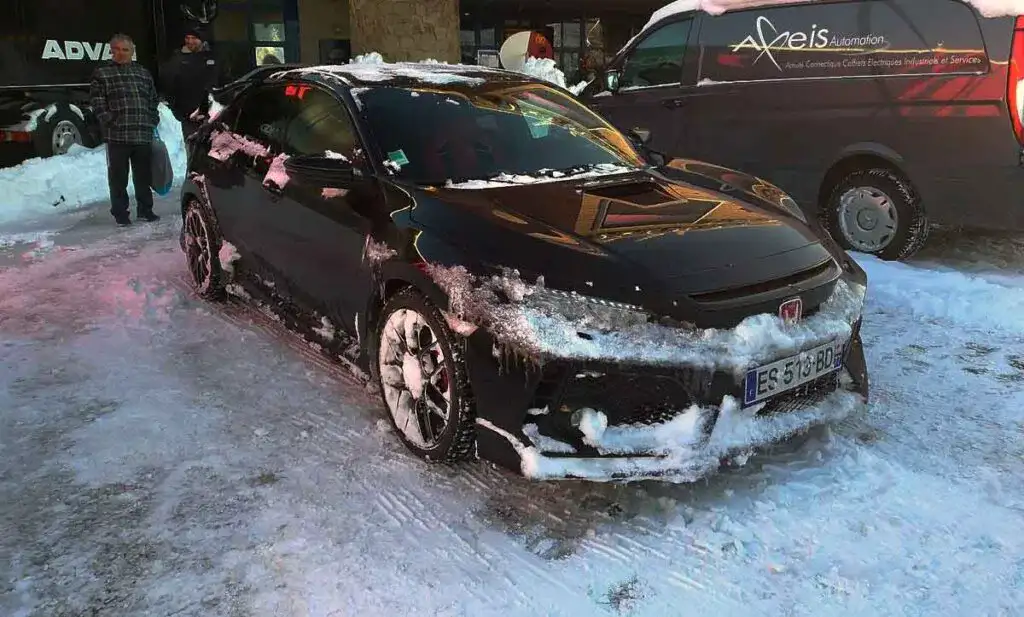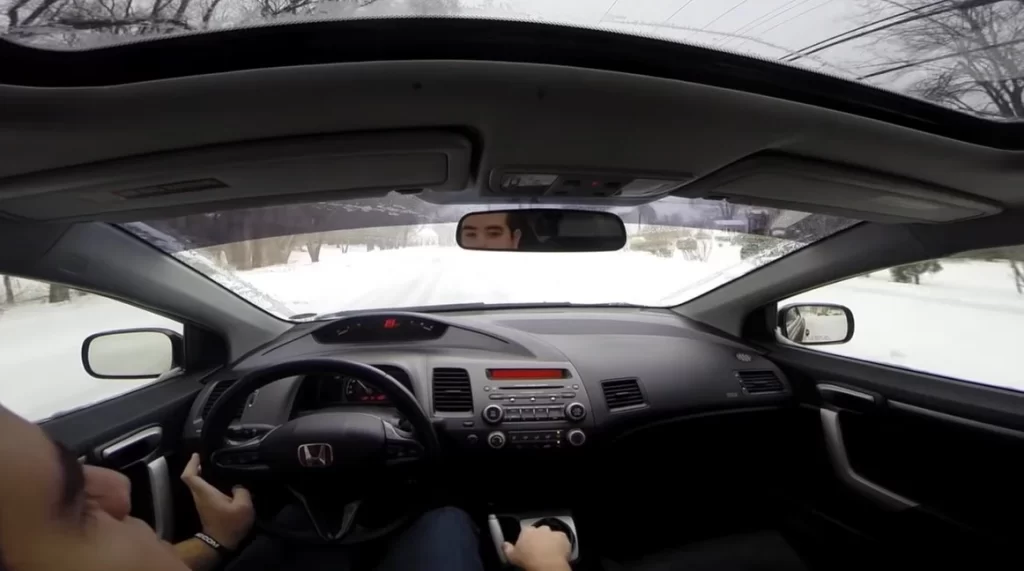Are Honda Civics Good in the Snow? The snow experience is completely different for vehicles used to drive under high-temperature environment conditions. But many of today’s vehicles can perform well in both cold and hot environments.
So, if you are living in an area where snow falls during winter, it is one of the main factors that you have to consider when buying a car for your everyday use. So in this article, we discuss the Honda Civics capability of surviving and well-performing in the snow.
Are Honda Civics Good in the Snow? In simply…
It is possible to drive in a variety of winter conditions with the Honda Civic owing to its Traction Control and Vehicle Stability Assist systems, which improve road grip and balance on slick surfaces. It also boasts a Road Departure Mitigation System (RDMS), an anti-lock braking system (ABS), and a low profile for better winter driving.
The Honda Civic is hardly the first automobile that comes to mind when thinking of driving in the snow. Something like a crossover, SUV, or truck would be the first item that would draw our attention. However, not everyone needs, or has the financial means to purchase, any of the cards mentioned.
According to studies and owner reviews, a Honda Civic, despite its compact size, performs admirably in the cold. With the help of a variety of driver assistance functions, the ordinary Civic can navigate through snow and ice without sliding or skidding. Despite this, we must point out that the Civic has a low ground clearance, which may limit its capacity to handle snowy conditions.

What should you consider while driving in the winter snow?
Make sure your tank is always topped up.
When it’s cold outside, you’re more likely to consume more petrol since your engine has to work harder to keep your car running. Short trips to the supermarket or to the office may necessitate more frequent pit stops at the petrol station than usual.
You don’t want to get stranded in the snow if you run out of petrol while driving.
Fill your tires up a little bit.
You want to be sure that your tires, whether they are snow tires or not, are inflated to the required pressure when the weather gets colder. If you’re driving on underinflated tires, they might burst.
It might take a long time for a tow truck to arrive on the side of the road during the winter because more accidents occur during this time of year.
Park Your Car in a Public Place to Warm It Up.
As soon as you get in your car, you’ll want to let the engine warm-up for a few minutes before driving. Even if you have a garage, you should avoid doing something in it.
When you’re trapped in a location with no access to fresh air, the exhaust fumes from the car might be hazardous to your health. You can get some breathing room by opening the garage door, letting fresh air in, or starting the car and pulling onto the driveway.
Keep an eye out for cruise control.
When the road is covered with ice or snow, you should avoid using cruise control. If you lose traction at any point, you might lose control of the vehicle.
Because you may have to avoid snow mounds and icy spots on the road, you want to maintain control of your vehicle at all times. Using this in adverse weather is a terrible idea since it makes it more difficult to restore control if something goes wrong.
Reduce your speed a bit.
In a situation when the roads are open, and you can see a clear path ahead, it may be tempting to hurry up. This, however, is not a good plan.
When driving in snowy conditions, you should slow down to 10 miles per hour or less in order to avoid swerving on wet patches, which would be more dangerous than driving at a faster pace.

In order to avoid a collision, keep your distance from the vehicle in front of you.
You should increase the gap between you and the automobile in front of you to allow yourself more time to brake. It will take longer to come to a complete stop on the slick road.
If you don’t keep back far enough, this might result in a collision with the vehicle in front of you. So, make sure to leave lots of room around you.
What has made the Honda Civic better in the snow?
When we discuss “Are Honda Civics Good In The Snow?” the features of Honda Civics that help to perform it on the snow cannot be left alone. So here are some of those.
Stability Control.
When it comes to winter driving aids, the Honda Civic‘s Vehicle Stability Assist is a welcome addition. Using the Vehicle Stability Assist in low-traction winter conditions prevents your vehicle from losing control.
As you drive, the vehicle’s acceleration, steering angle, and wheel speed are all monitored by sensors in the VSA. VSA can evaluate if your vehicle is stable or not by combining these bits of information.
Your car’s VSA will automatically lower engine power output if the vehicle begins to lose control. VSA will also be able to stop individual wheels.
These activities have the following effects:
You need to reduce the speed of the vehicle so that you can retake control.
Remain in control of the vehicle if it begins to deviate from the path you intend.
Control of traction.
Your Civic’s Traction Control helps to keep the wheels from spinning excessively, ensuring a safe ride. During the winter, the function is a lifesaver since it eliminates one of the largest issues faced by winter drivers: the inability to maintain control on the road.
Exactly how does Traction Control do it? On-board computers monitor the speed of a rotating wheel.
As soon as a wheel begins to spin excessively, Traction Control kicks in to limit the amount of wheelspin. It accomplishes this by reducing engine power and applying brakes in unison.
Brake Force Distribution using electronic means.
Thanks to the function, your Civic’s Electronic Brake Force Distribution (EBFD) improves braking safety, especially on wet roads. The braking-induced wheel lock is more likely to occur during the winter months. Then if your wheels lock, you’ll have a tough time turning; your automobile may even slide.
FAQs related to Are Honda Civics Good in the Snow.
Are Honda Civics bad in the snow?
The Honda Civic is a modest compact vehicle with 6.7 inches of ground clearance in terms of snow handling. If you’re traveling on snow-covered roads, the Civic should be able to handle it. Even 2-4 inches of snow should be no problem for it.
Which Honda is best in the snow?
The 2019 Honda Pilot is very capable of plowing through snow thanks to its 280 HP and more than 07 in of ground clearance. Improve traction in slick weather with the Intelligent Traction Management system, which includes a Snow Mode.
We hope you’ve got the answer that you’ve needed for the question, ” Are Honda Civics Good in the Snow “ reading our explanation. If you have more questions just leave a comment below, and we are really straightforward to help you further. If you need review and problems of the Honda Odyssey Problems, check this link for it. Thank you.
